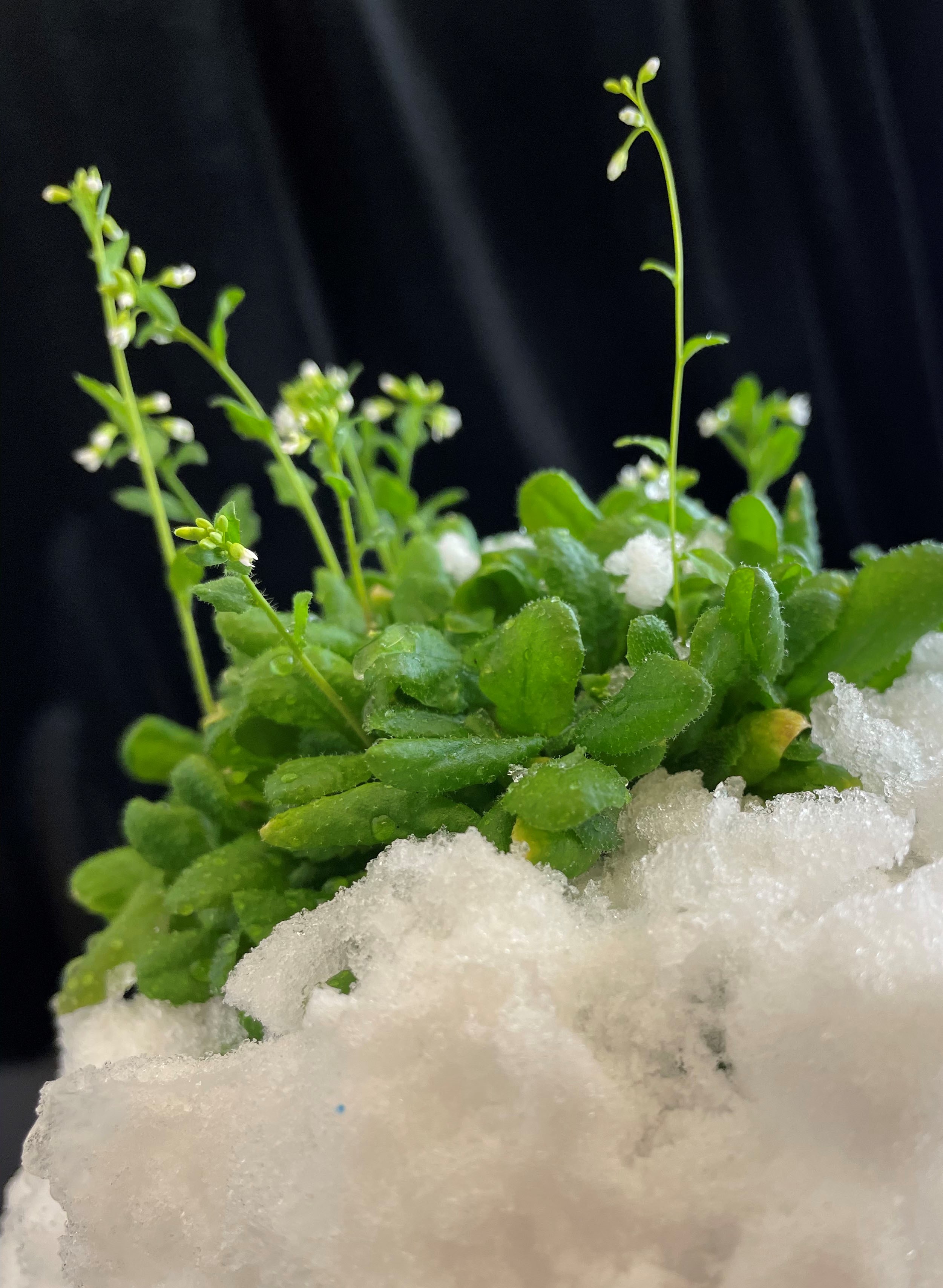How plants use lipids to protect themselves from freezing
Freezing temperatures can kill certain plants, while others adapt to survive cold winters. And a sudden cold snap can damage or kill even winter-hardy plants.
Zachery Shomo, a graduate student at the University of Nebraska–Lincoln, studies how lipids protect plants from freezing and dying. He will present his recent research on Friday, 11:15 a.m. EDT, at the 2021 ASBMB Annual Meeting.


“We would like to increase the ability of plants to withstand unseasonable climate events,” Shomo said. “In fall, when we have frost that occurs too soon, the plants are experiencing that cold stress before they are acclimated to do so.”
The opposite can happen in early spring when warm weeks might make the plants lose their protective ability.
Shomo works on SFR2, short for Sensitive to Freezing 2, an enzyme that spurs lipid remodeling in response to cold or freezing stress, producing lipids that have multiple sugar residues as a head group. “These lipids are essential for most plants to survive a freezing response, but we don’t know their functional role,” Shomo said.
This is the most interesting part of this project, he said: Researchers know so much about this enzyme, but there is much still to learn about how these lipids function to protect plants from freezing.
Shomo and his colleagues in Rebecca Roston’s lab have a few hypotheses about how SFR2 works to modify the lipid bilayer and protect the plant. The first is that the enzyme uses lipids that are not very good at forming bilayers as a substrate to produce oligogalactolipids, lipids containing two or more galactose molecules as a head group, to take their place. The resulting oligogalactolipids then form a more stable bilayer and protect cells. Another hypothesis is that as the temperature drops, plant cells start to accumulate different chemicals to prevent the liquids in them from freezing, and oligogalactolipids might interact with these as well. A third hypothesis is that these lipids act as spacers, preventing the membranes of different cells from fusing during freezing and keeping the cells’ structure intact.
The researchers found out how SFR2 activity is regulated by temperature. They used mass spectrometry analysis of SFR2 from plants grown at several temperatures (including freezing), which showed that the protein had different phosphorylation profiles at varying temperatures. They then used a mixture of site-directed mutagenesis, in-silico modeling and synthesis of the mutated protein to show phosphorylation of surface amino acids is necessary for SFR2 to function. These experiments showed that SFR2 is activated by the phosphorylation of various amino acids. Their next goal is to identify which specific amino acids have to be phosphorylated for this to happen.
By understanding the metabolic signals that are activated to protect plants from freezing stress, the researchers hope to devise ways to increase cold tolerance in crops.
Enjoy reading ASBMB Today?
Become a member to receive the print edition four times a year and the digital edition monthly.
Learn moreGet the latest from ASBMB Today
Enter your email address, and we’ll send you a weekly email with recent articles, interviews and more.
Latest in Science
Science highlights or most popular articles

The science of staying strong
Muscles power every movement, but they also tell the story of aging itself. Scientists are uncovering how strength fades, why some species resist it and what lifestyle and molecular clues could help preserve muscle health for life.

Bacteriophage protein could make queso fresco safer
Researchers characterized the structure and function of PlyP100, a bacteriophage protein that shows promise as a food-safe antimicrobial for preventing Listeria monocytogenes growth in fresh cheeses.

Building the blueprint to block HIV
Wesley Sundquist will present his work on the HIV capsid and revolutionary drug, Lenacapavir, at the ASBMB Annual Meeting, March 7–10, in Maryland.

Gut microbes hijack cancer pathway in high-fat diets
Researchers at the Feinstein Institutes for Medical Research found that a high-fat diet increases ammonia-producing bacteria in the gut microbiome of mice, which in turn disrupts TGF-β signaling and promotes colorectal cancer.

Mapping fentanyl’s cellular footprint
Using a new imaging method, researchers at State University of New York at Buffalo traced fentanyl’s effects inside brain immune cells, revealing how the drug alters lipid droplets, pointing to new paths for addiction diagnostics.

Designing life’s building blocks with AI
Tanja Kortemme, a professor at the University of California, San Francisco, will discuss her research using computational biology to engineer proteins at the 2026 ASBMB Annual Meeting.

